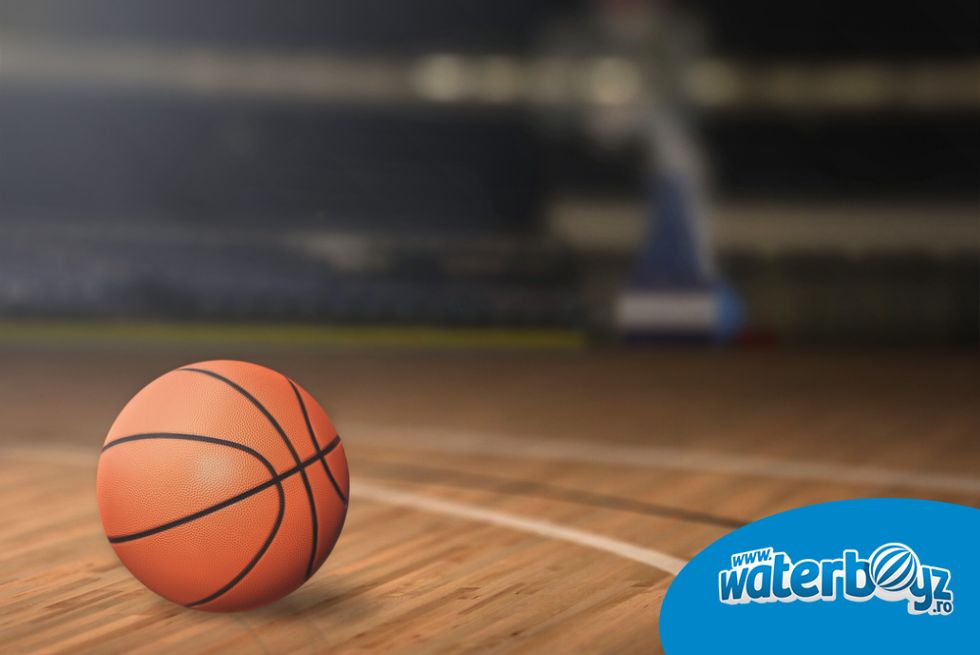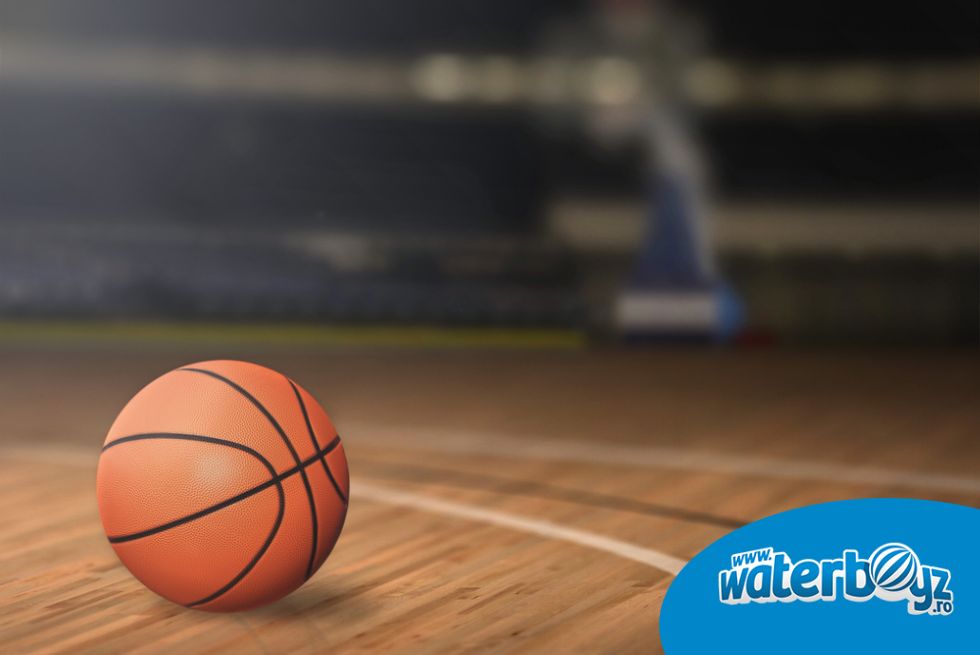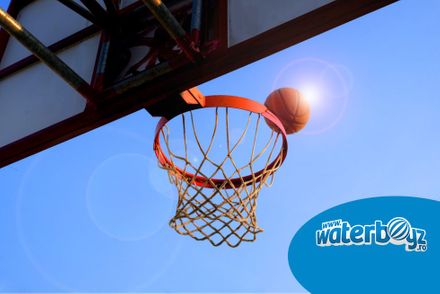Basketball is an extremely popular team sport worldwide. During the interwar period, Romanians became increasingly interested in the dynamics of this sport imported from overseas, quickly organizing local, regional, and national basketball competitions.
Romanians' passion for this team sport is evident through the outstanding achievements of both the men's and women's national basketball teams throughout modern history: three bronze medals in European women's championships and two fourth-place finishes in the men's European championships.
Basketball boasts a vast base of supporters. Competitions like the NBA attract millions of fans worldwide in front of their screens. Naturally, many basketball enthusiasts end up playing the sport themselves, along with their friends, in specially designed spaces.
Therefore, creating a basketball court presents an opportunity that can bring numerous benefits to the community. Today, we delve into how to set up a basketball court and the solutions available to cater to different types of courts for adults, children, and even individuals with disabilities.
What are the benefits of basketball?
Basketball is associated with a diverse range of benefits accessible to practitioners of all ages. Firstly, it contributes to achieving enviable physical fitness due to the fast-paced nature of the game. For youngsters, such exposure during their growth phase is vital for harmonious development and attaining above-average height.
Basketball is played for points, which are scored when the ball is thrown through the hoop. Therefore, we are talking about a certain level of skill, which improves as one continues to practice this sport. It is important to note that despite being a team sport, basketball can also be practiced individually to improve specific player qualities, such as three-point shooting, changing direction, and various basketball ball tricks.
Furthermore, basketball stimulates endurance and helps develop the muscles of the entire body. Regular practice of this sport on specially designed sports courts is crucial for improving essential bodily systems, including the cardiovascular system, metabolic system, digestive system, and respiratory system.
Last but not least, basketball is a team sport. When practiced from a young age, it ensures the acquisition of essential qualities for any individual in the relationships they build with their peers: collaboration to achieve common goals, taking responsibility for mistakes, the ability to collectively overcome failures, and adapting the entire team to unforeseen changes.
All these, along with many other benefits, can be experienced by those who play basketball on a specially designed court. Thus, we continue our article today with an A to Z guide for those interested in setting up a basketball court. Stay with us and learn more useful information on this topic.
How to set up a basketball court?
Basketball can be played both indoors and outdoors. Regardless of the space where the basketball game is held or the players' skill level, setting up a basketball court must be meticulously planned. Otherwise, player performance could be compromised, jeopardizing their safety.
Dimensions of a basketball court
If you want to adhere to standard dimensions for such a playing area, according to regulations from the International Basketball Federation, you should have a perimeter with the following characteristics:
- The length of the basketball court should measure 28 meters.
- The width of the basketball court should measure 15 meters.
In cases of organizing streetball events, like 3vs3 games, or if you're merely setting up a court for community fun, these dimensions can be adjusted based on the available space.
For excellent mobility on a public basketball court, its length should be at least 26 meters, and its width around 14 meters. For an indoor playground, ensure the room's height is at least 7 meters.
For university campuses, a basketball court's length can range from 20 to 28 meters, while its width can vary from 12 to 16 meters. Mini-basketball courts may have lengths between 12 and 18 meters.
For courts dedicated to children, a similar-sized surface as for mini-basketball can be set up. The difference lies in the height of the backboards and the specifics of the basketball hoops. Fun variations are more suitable for children, like this 3-in-1 basketball hoop.
Materials for setting up the basketball court
The quality of materials used to set up a basketball court affects the players' perception of the space. The court's surface is central, and its durability is crucial for gameplay. Moreover, the surface should provide adequate grip, essential for players' quick changes in direction.
Here are the most commonly used materials for basketball court surfaces:
Outdoor basketball courts:
- Modular polypropylene (PP) flooring: This material withstands various risks, including those related to weather, and allows easy installation due to its interlocking system.
- Polyurethane tartan: These synthetic plastic compounds guarantee excellent grip, significantly reducing the risk of unintended injuries.
Indoor basketball courts:
- Rubber: This can be poured over extensive floor surfaces to create a resilient, long-lasting court. It's also frequently used and easy to clean.
- Lacquered parquet: A special type of parquet primarily used for sports halls. Unlike rubber flooring, this option is more environmentally friendly.
- Modular polypropylene flooring: Similar to outdoor courts, the indoor material does not necessarily require ventilation.
- PVC modular flooring: This is simple to assemble, making the construction process relatively quick. However, it's not recommended for outdoor courts.
Setting up a basketball court requires careful consideration of dimensions, materials, and safety. By following these guidelines, you can create a space that fosters not only enjoyable gameplay but also a range of physical and social benefits for the community.


Marking the Basketball Court Surface
Ensure that the paint used for marking the lines is white, and the applied line thickness is approximately 5 centimeters. This way, each player can easily see the boundaries of the court, the court's edges, the midcourt line, and the free throw point.
Here are the markings applied to a basketball court surface:
- The center circle - According to the International Basketball Federation (FIBA) standards, this circle should have a radius of 1.8 meters.
- The midcourt line - Connects the two center points of the court's width, dividing the area into two equal parts.
- The three-point area - Marks the space from which a player prepares to shoot towards the opponent's basket. It is bounded by two parallel lines, with one end about 6.25 meters from the center of the basket.
- The free-throw line - Marking the area bordered by the key area, it's approximately 3.6 meters long. According to FIBA regulations, its color may differ from other markings but should match the center circle's color.
What other elements are necessary for setup?
Moving from the floor marking to other crucial components of completing a basketball court project:
Basketball hoops
Various basketball hoop models exist. Professional match courts typically use fixed hoops, while recreational spaces can have adjustable basketball hoops installed. This accommodates different age groups or heights for usage.
Basketball backboards can be made of either wood (a more cost-effective option) or monolithic glass (more resistant to impact and weather). The backboard's length should be around 1.8 meters, and its width, 1.1 meters. A rectangle is marked above the hoop, centered.
A basketball hoop for people with disabilities is another product variant to consider, ensuring inclusivity for wheelchair-bound players. The hoop is adapted in height and features a tunnel through which the ball easily returns to the player after being shot.
Furniture required for setup
Regardless of the setting, comfortable furniture for those present can significantly impact their perception of the service provided. Available in our range are benches for spectators during basketball games.
Moreover, for heightened hygiene, we offer waste bins and containers for selective waste collection. Placed visibly, these ensure a proper way to dispose of food residues and other materials.
For those choosing to leave their car at home and cycle to the basketball court, our bicycle rack range provides easily integrable solutions. Check out the available offers on the website and choose products with excellent value for a very affordable price.
Fencing around the basketball court
The fence around an outdoor basketball court keeps the ball within the perimeter and serves as an essential safety element. If you choose to fence the court, allowing access only with your permission, the risk of theft or damage to the court's elements can significantly decrease. The fence can be made of metal mesh and may be around 4-5 meters high for optimal protection.
Lighting system for the court
To enable basketball games even after dark, you can include installing a lighting system in your setup plan. The solution you opt for should ensure excellent brightness across the entire basketball court surface and in the spectator area.
If you're interested in setting up a basketball court, we recommend seeking the assistance of a team experienced in such work. Professional advice is crucial at every stage of such a complex project, from gathering documentation for obtaining operational permits to selecting materials, designing the space, and installing the elements within the perimeter. Explore other interesting blog articles to gain a deeper understanding of the benefits offered by products in the Waterboyz range or our collaboration with our team of specialists!




































































































































